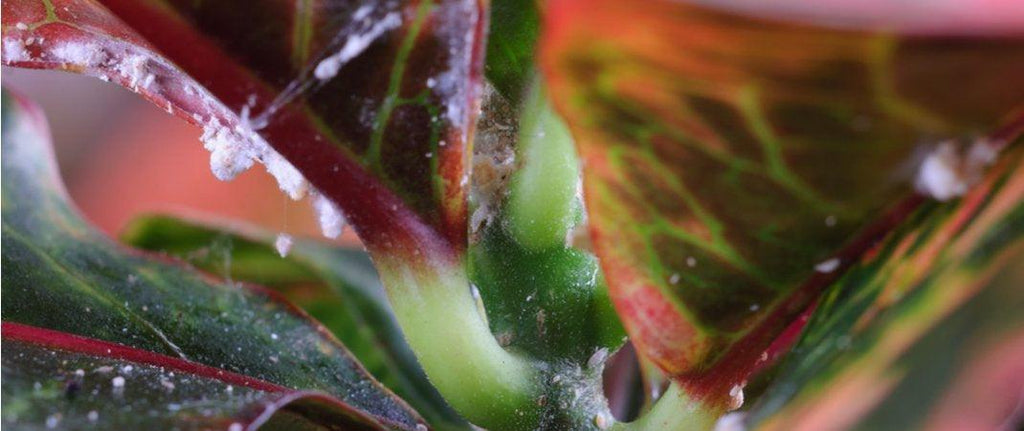
Whether you’re a beginner or an experienced plant parent, one of the most important things you should keep learning about are common houseplant diseases and pests and ways to avoid them from infesting or damaging your plants. Despite the many kinds of plant diseases and pests, the factors that contribute to the development of these problems are the same. Mostly it’s due to overwatering, insufficient light, direct sunlight exposure, improper drainage, compost is too dry, reusing potting mix and containers, plant debris, poor air circulation, high humidity, overcrowding, and heavy or consistently wet soil. Avoiding these common culprits is essential in keeping your plants healthy and the key prevention steps you need to avert the onset of diseases and pests and having to go through different plant treatments.
Bacterial, Fungal, and Viral Plant Diseases 
Root or stem rot, fungal leaf spots, and bacterial leaf spots all have some things in common: overwatering, constant wetness on soil and foliage, and poorly draining soil. A formula for disaster is poor drainage and overwatering as this causes a constantly damp, wet, and cool environment in which fungal organisms thrive best. One of the best ways to test the moisture levels in the soil of your indoor plants is with a plant moisture meter. With root or stem rot being one of the most common diseases, it’s also one of the most difficult problems to treat. While you can try to separate cuttings that are unaffected, in most cases, once indicators start to show, the plant is beyond saving. Some of the tell-tale signs of a root or stem rot are squishy brown or black roots; brown, yellow, or black foliage and stems; and sagging from top to bottom. Much like root rot, fungal leaf spots are caused by a variety of fungi that are manifested as yellow, brown, red, or black spots on the plant’s foliage. These spots can clump together further causing leaf drops. Bacterial leaf spots on the other hand can be more serious and are described as black water-soaked with yellow circle patterns on the foliage. Some cases can be localized affecting only the foliage, but it can also spread to the stems. Overcrowding and reusing soil with bacteria also contribute to the problem. For both leaf spot issues, it helps to decrease the humidity, increase air circulation, space houseplants, remove fallen plant debris, not reusing infected potting mixes, not splashing water on the foliage, and water early in the day to give it time to dry off.
Mold and Mildew
Some of the common mold and mildew problems are black sooty mold, gray mold (botrytis blight), white mold, and powdery mildew. While these are also caused by fungi, generally, problems like these are not damaging and are easier to treat. Pests such as aphids, mealybugs, soft scales, whiteflies, leafhoppers, and psyllids secrete honeydew. When they attack a plant, the honeydew they produce is where several fungi will thrive on causing black sooty molds. Forming on the top of the potting mix are white molds caused by saprophytic fungus. While not particularly harmful, it’s a sign that growing conditions are bad due to overwatering, infected potting mix, and poor drainage. Gray mold on the other hand is caused by botrytis cinerea, a fungus thriving on fallen plant debris causing bull’s eye patterns on the foliage, encircling lesions on the stems, and brown spots on the petals of flowering plants. Spores are commonly seen on the debris, but these are also circulated in the air and can be scattered through splashing water when watering. When humidity is high and indoor temperature becomes cooler (21°C and lower) during the winter season, it’s common to see powdery mildew. Other contributors include plant debris, wet foliage, soggy soil, and overcrowding. Caused by a fungus called oidium, it’s less serious but triggers leaf drops and distortions on the affected foliage.
Plant Pests
Other common pests like caterpillars, earwigs, red spider mites, cyclamen mites, eelworms, root mealybugs, scale insects, and thrips can also pass a virus to plants that can cause stunted growth, yellow rings on foliage, abnormal flower coloration, mottling patterns, yellow patches, streaking light or dark green, and distorted leaf growth. When you have a new plant, make sure to only use clean containers with bottom drainage, a potting mix with good drainage, never reuse an old potting mix, reduce watering during winter, and water only when needed but never soggy. If you have more tropical plants, you can increase the humidity without overwatering by misting your houseplant every day or every other day. Good houseplant care is essential which includes:
- checking for signs of pests weekly
- using horticultural oil, neem, or insecticidal soap to eradicate any sign of pests
- proper watering
- balanced feeding
- removing plant debris
- wiping off the leaves with a damp cloth
- snipping off dead leaves
- using sterilized tools
- and washing your hands (if you’re a smoker) before handling plants.



